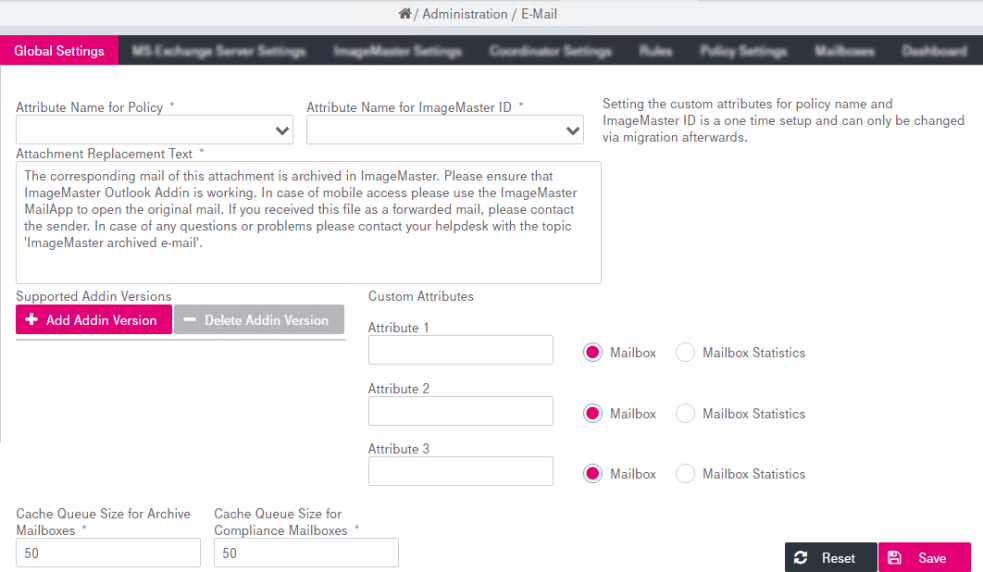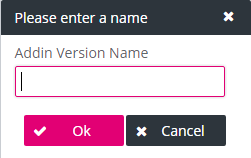To configure global MS Exchange server settings, click the Global Settings tab.

To configure global settings
-
In the Attribute Name for Policy (the name of the attribute that is used to keep the policy within the mailbox) list, select an available item. (If there is a predefined default, you can leave this as suggested. This setting may only need adjustment in specific scenarios, e.g. if your T-Systems contact tells you so.)
-
In the Attribute Name for ImageMaster ID (the name of the attribute that is used to keep the ImageMaster ID within the mailbox) list, select an available item. (If there is a predefined default, you can leave this as suggested. This setting may only need adjustment in specific scenarios, e.g. if your T-Systems contact tells you so.)
-
In the Attachment Replacement Text field, enter a text which represents the content of an attachment replacement stub file. This means that instead of the original content, this text will be displayed to an end user for an archived mail item. In addition to this text, the end user will see technical support information (e.g. a document ID) below this text, which is always inserted automatically.
-
On the Supported Addin Versions panel, compose the list of supported Outlook Add-In versions. See the section To add / delete accepted Outlook Add-In versions below.
-
On the Custom Attributes panel, you can optionally enter up to three additional custom attributes that are used in mailbox synchronization. An attribute can either refer to a Mailbox or to Mailbox Statistics. See appendix Additional mailbox list attributes for the list of all available attributes that are provided depending on your version of MS Exchange.
-
Set the values for Cache Queue Size for Archive / Compliance Mailboxes. The value defines the queue size for a Coordinator for archive / compliance mailboxes.
To add / delete accepted Outlook Add-In versions
In an ImageMaster environment with rule-based mailbox archiving (see chapter Policy rules settings), many Outlook clients can be involved (one for every end user), which all require an ImageMaster Outlook Add-In to be installed. The client-side Outlook Add-In must be compatible with the server-side Content Services for E-Mail. In general, the server side can be compatible with several client-side Add-In versions.
To avoid errors with incompatible versions, an administrator must define which Add-In versions are accepted by the server, based on a four-digit ImageMaster version number, e.g. “9.8.1.1”. If you configure ImageMaster for the first time, use the version of the Outlook Add-In that you have acquired. For any system upgrade (client- or server-side), the exact information on which version to add or remove must be obtained individually. The compatibility guide [T Compatibility Guide] gives an overview of supported Add-In / Coordinator constellations.
-
Click Add Addin Version. In the creation dialog, enter the version information and click OK. The new add-in version appears in the list box.

-
If desired, click Delete Add-in Version and confirm.
-
Click Save.